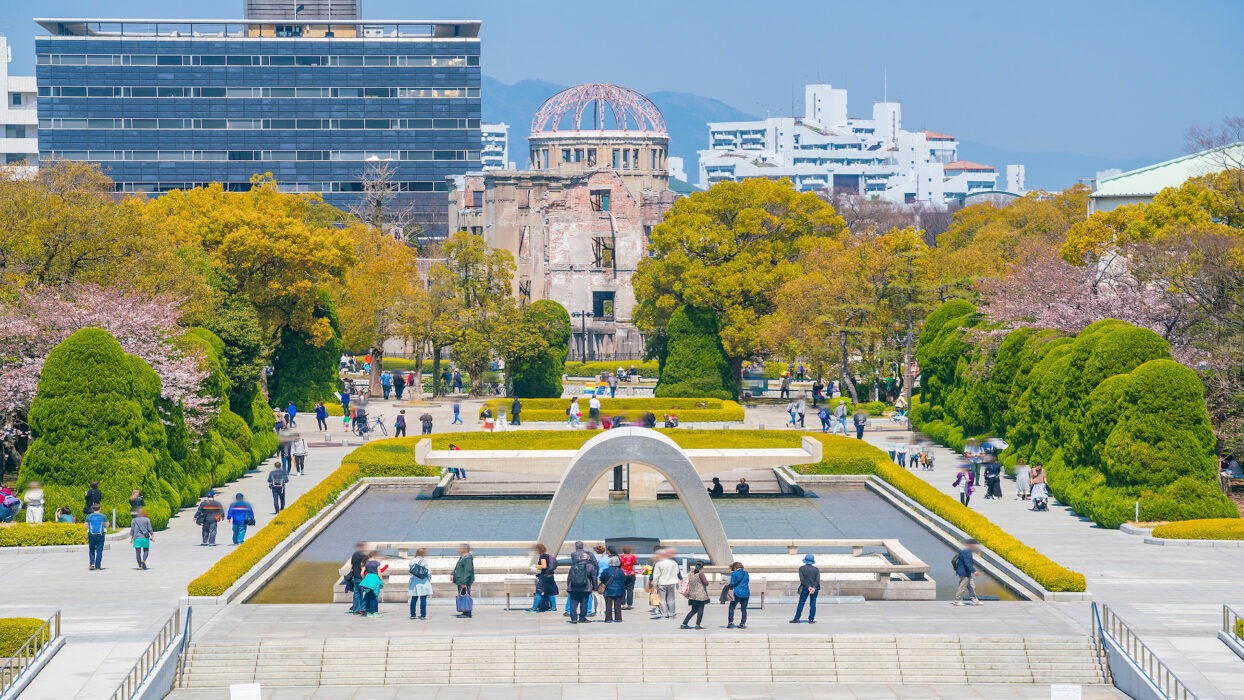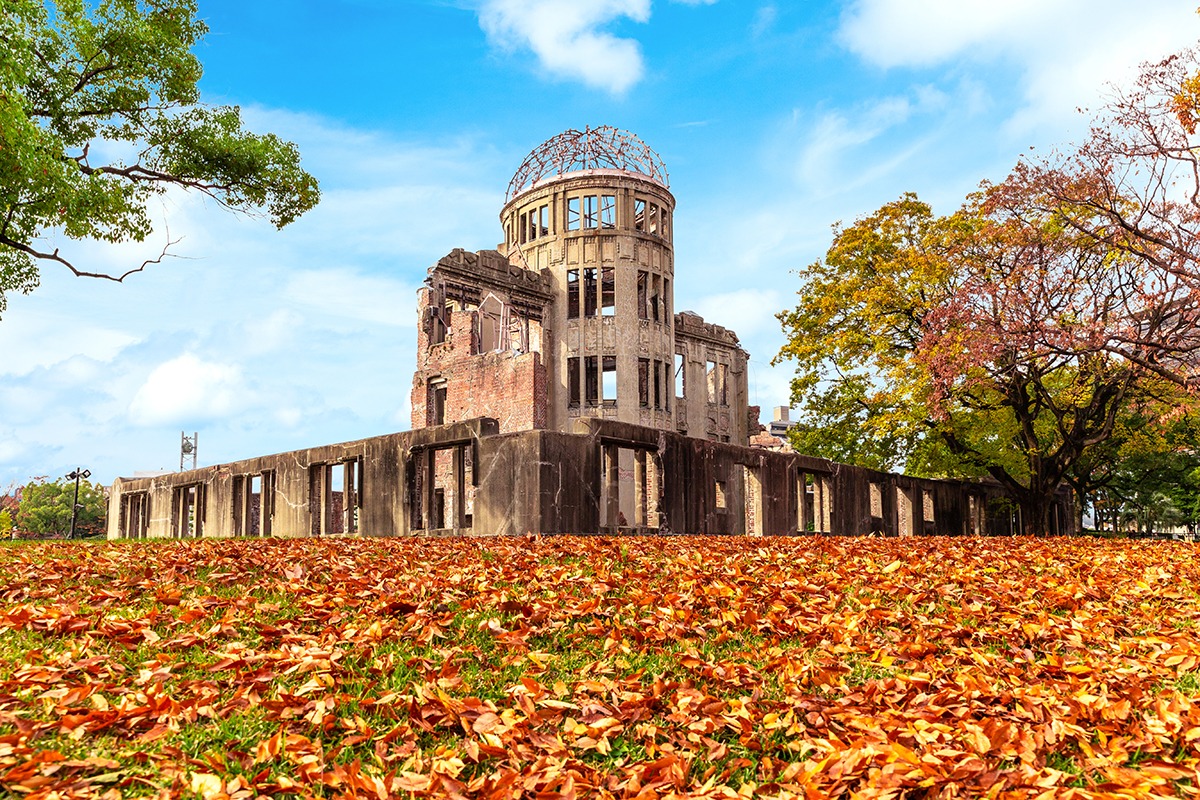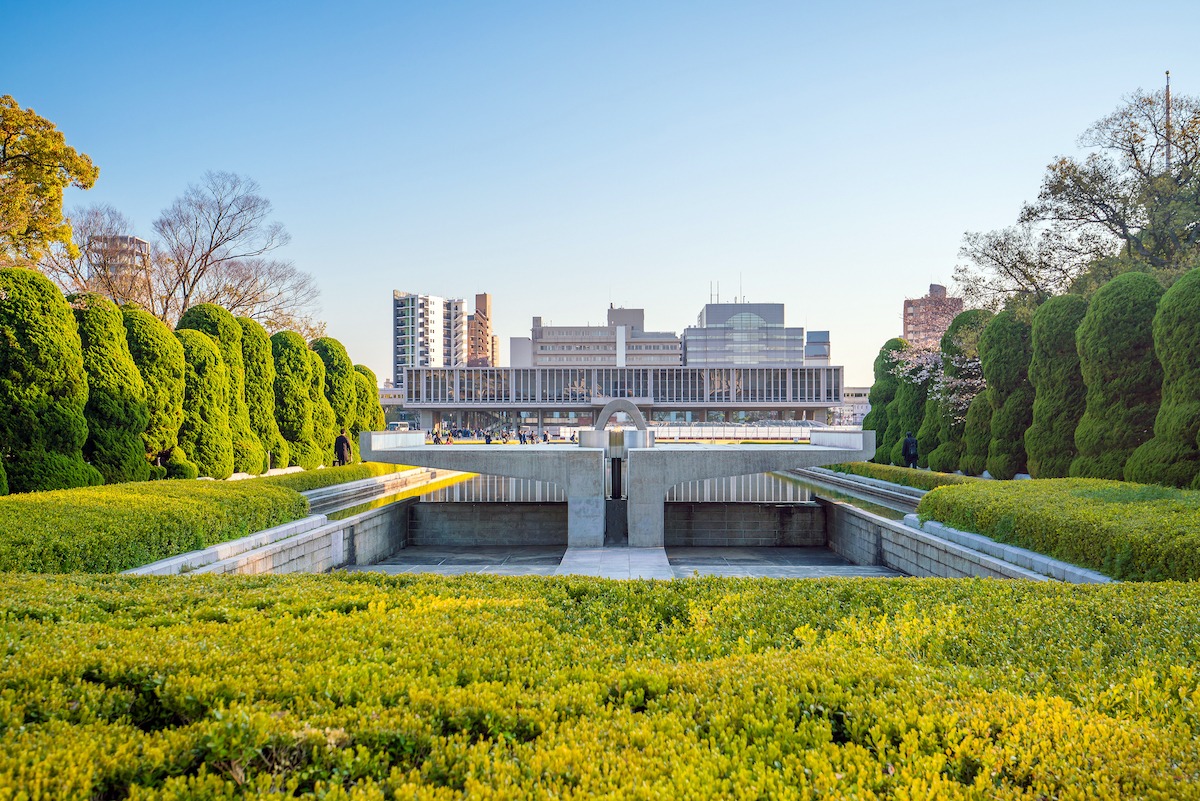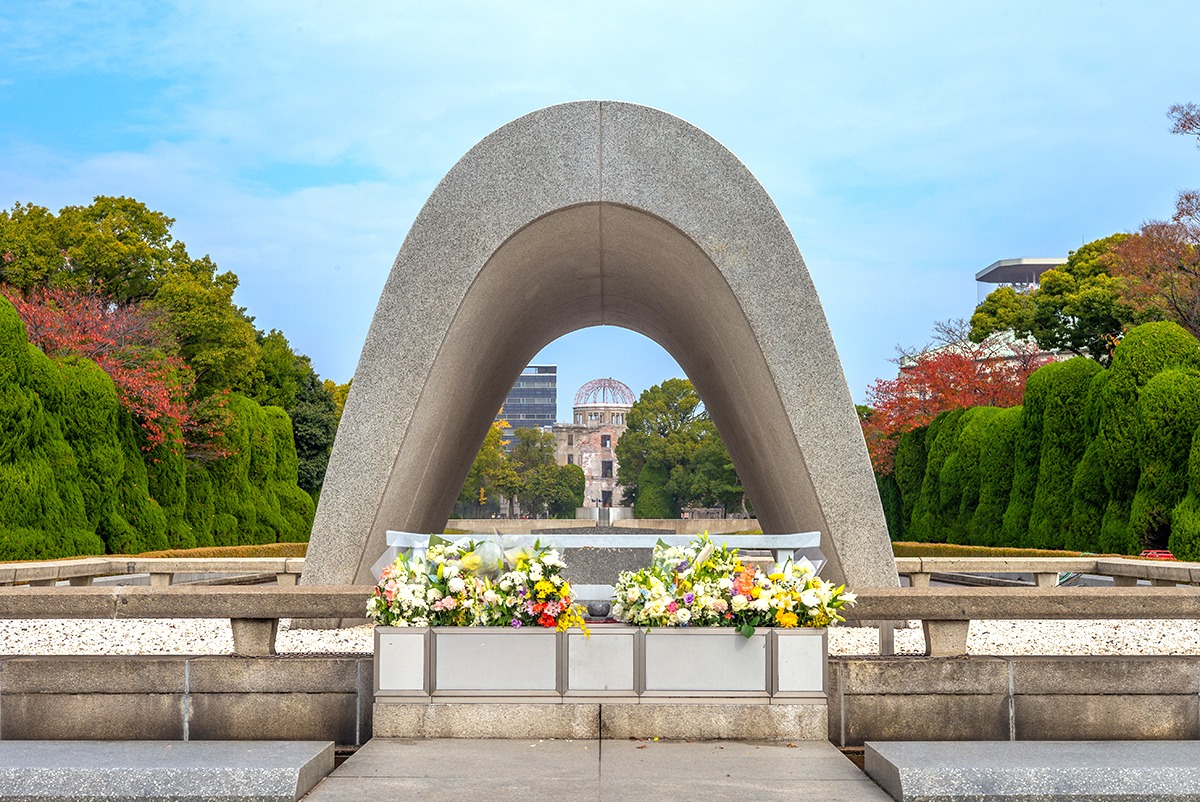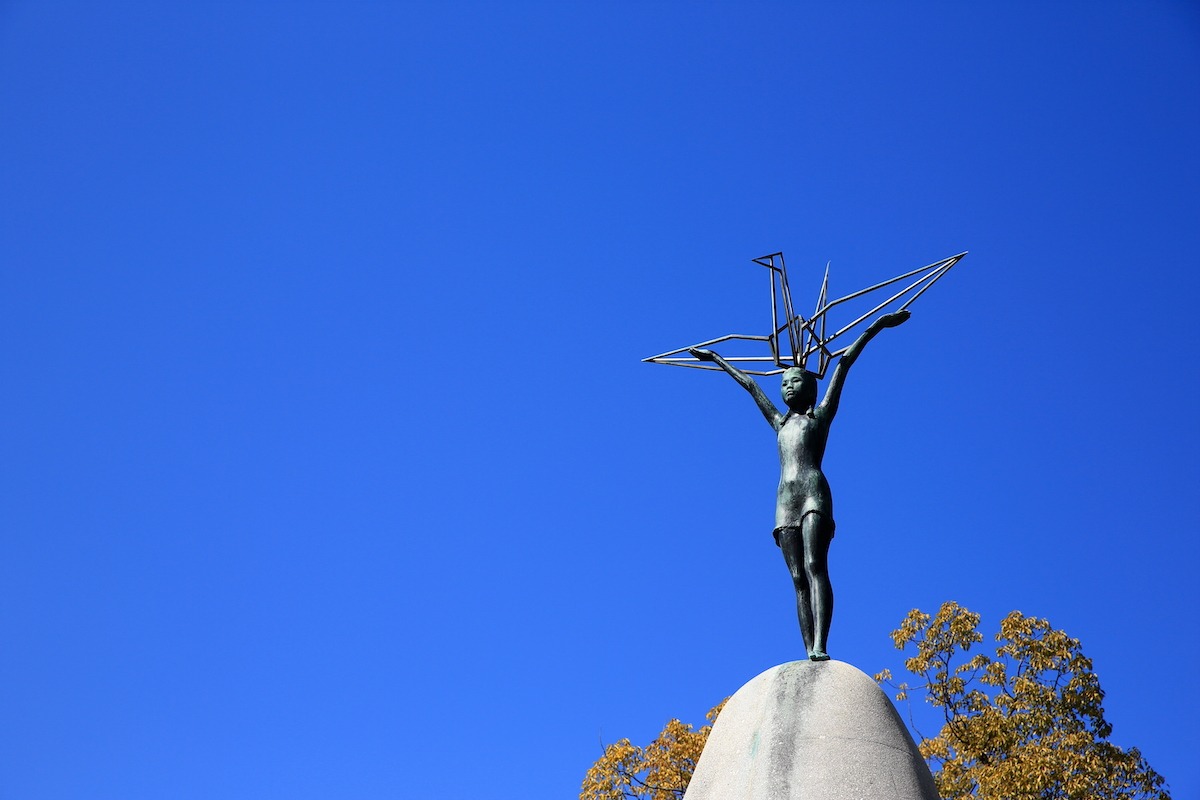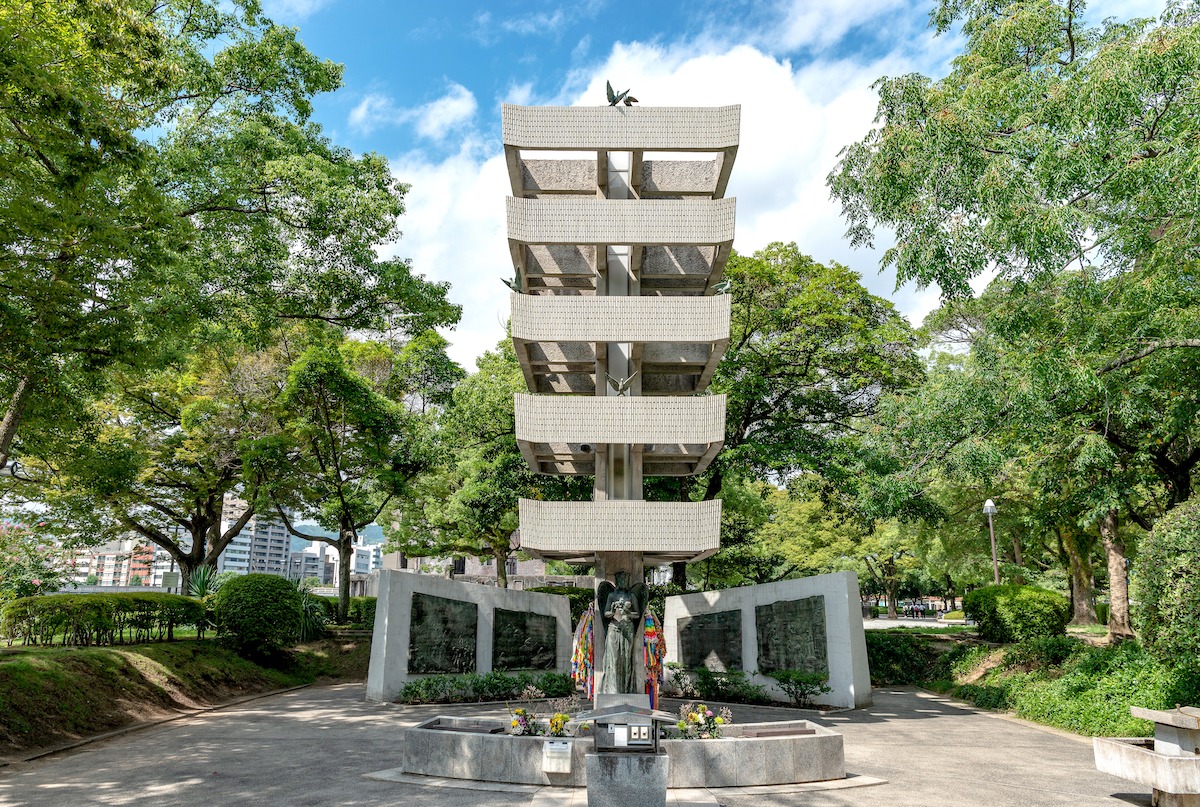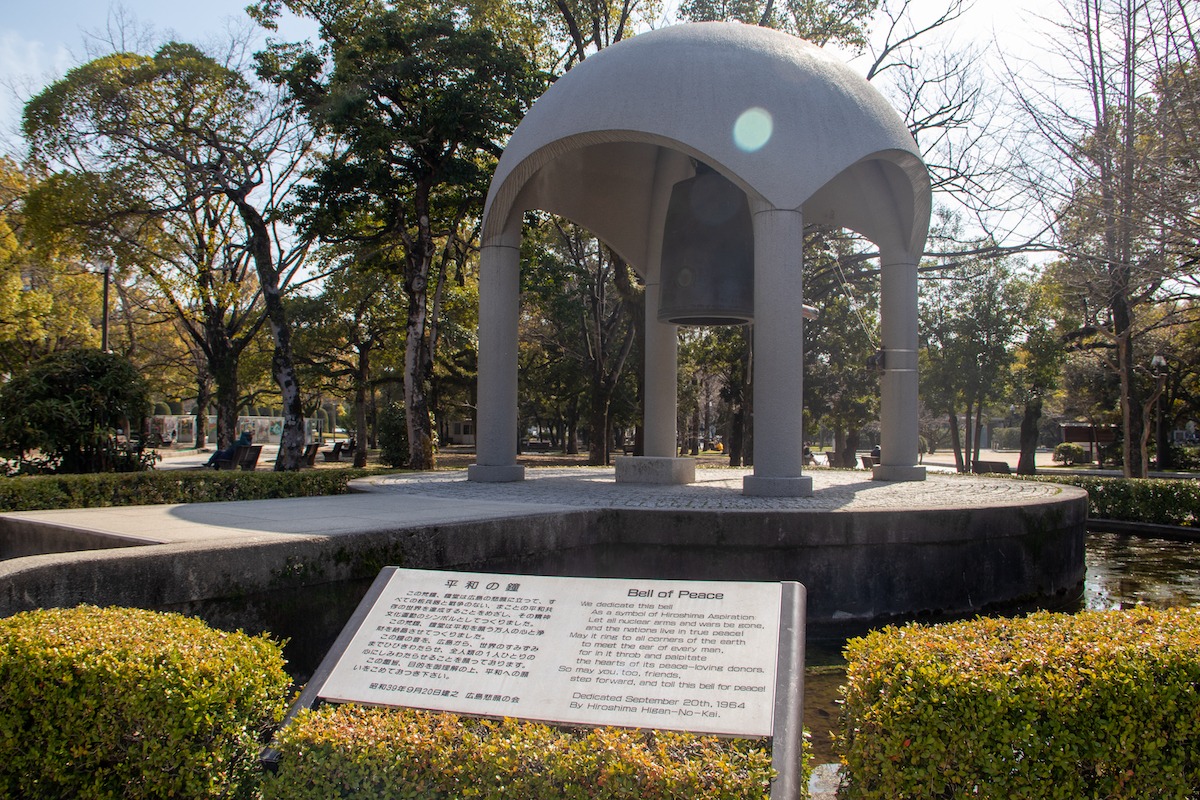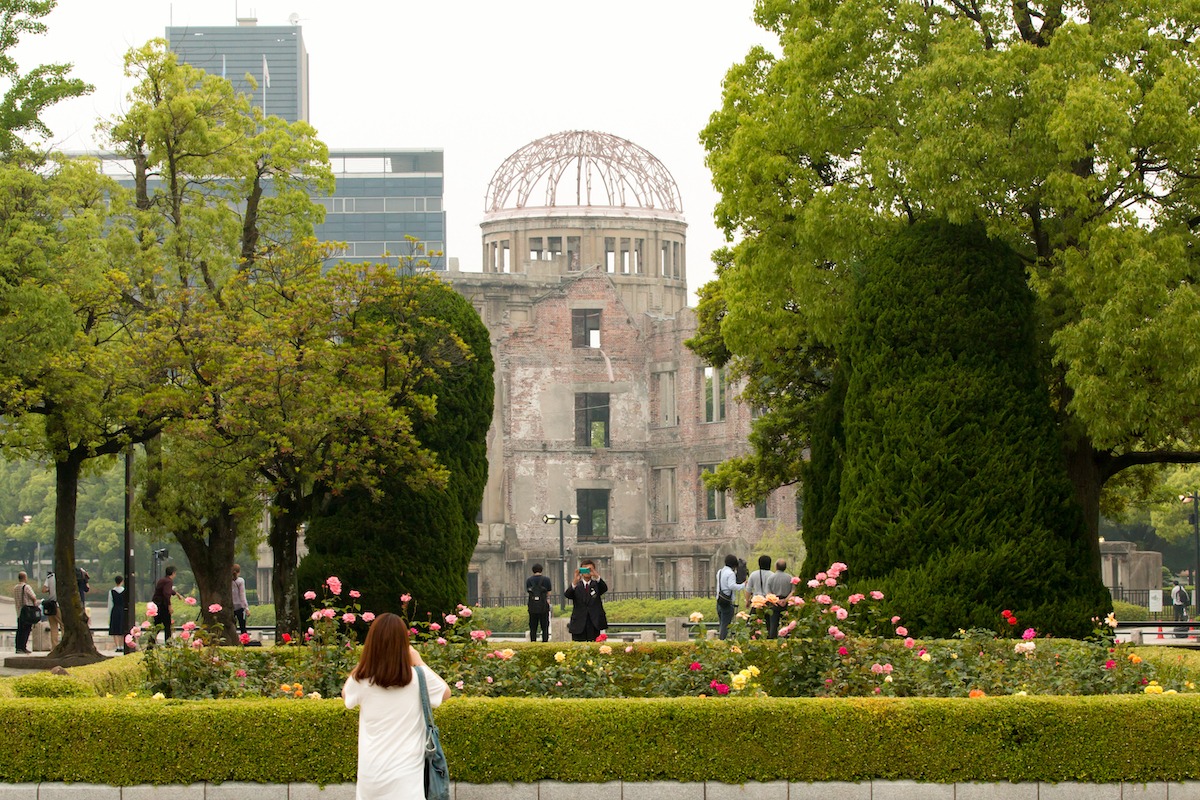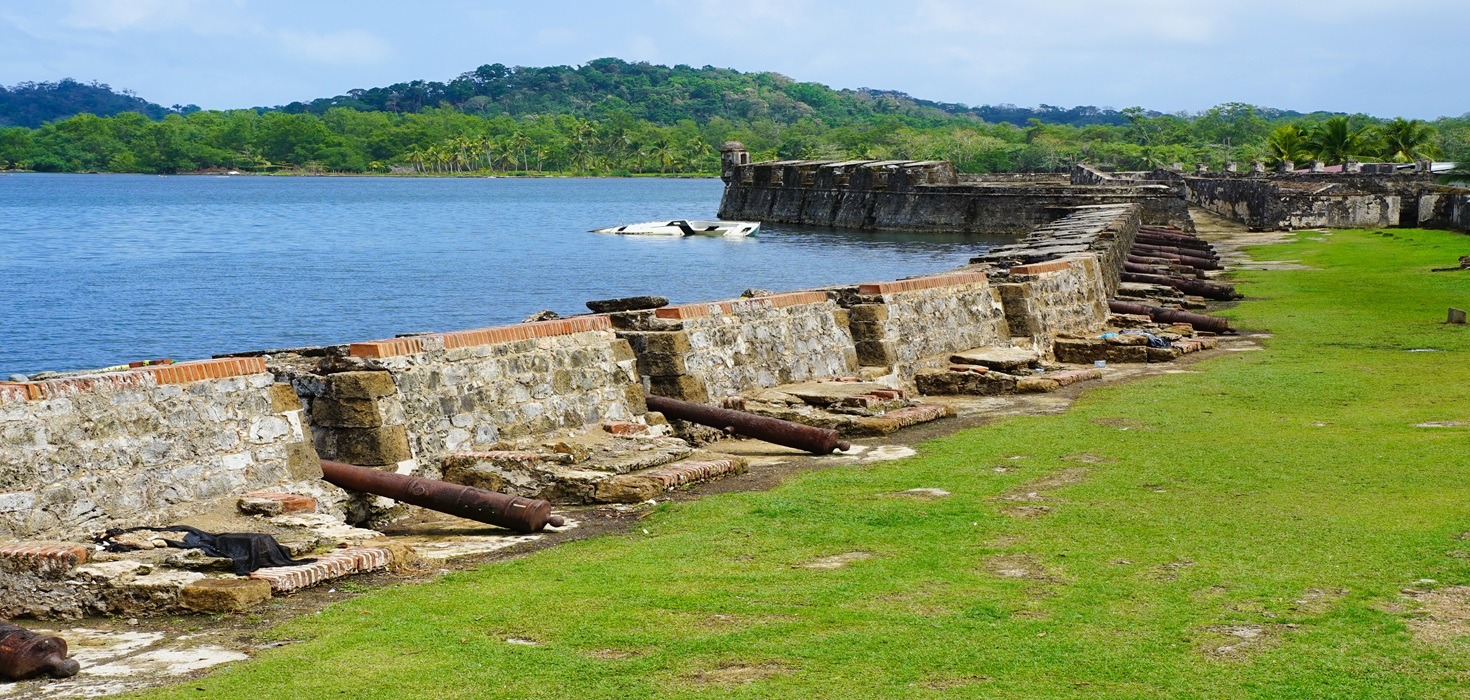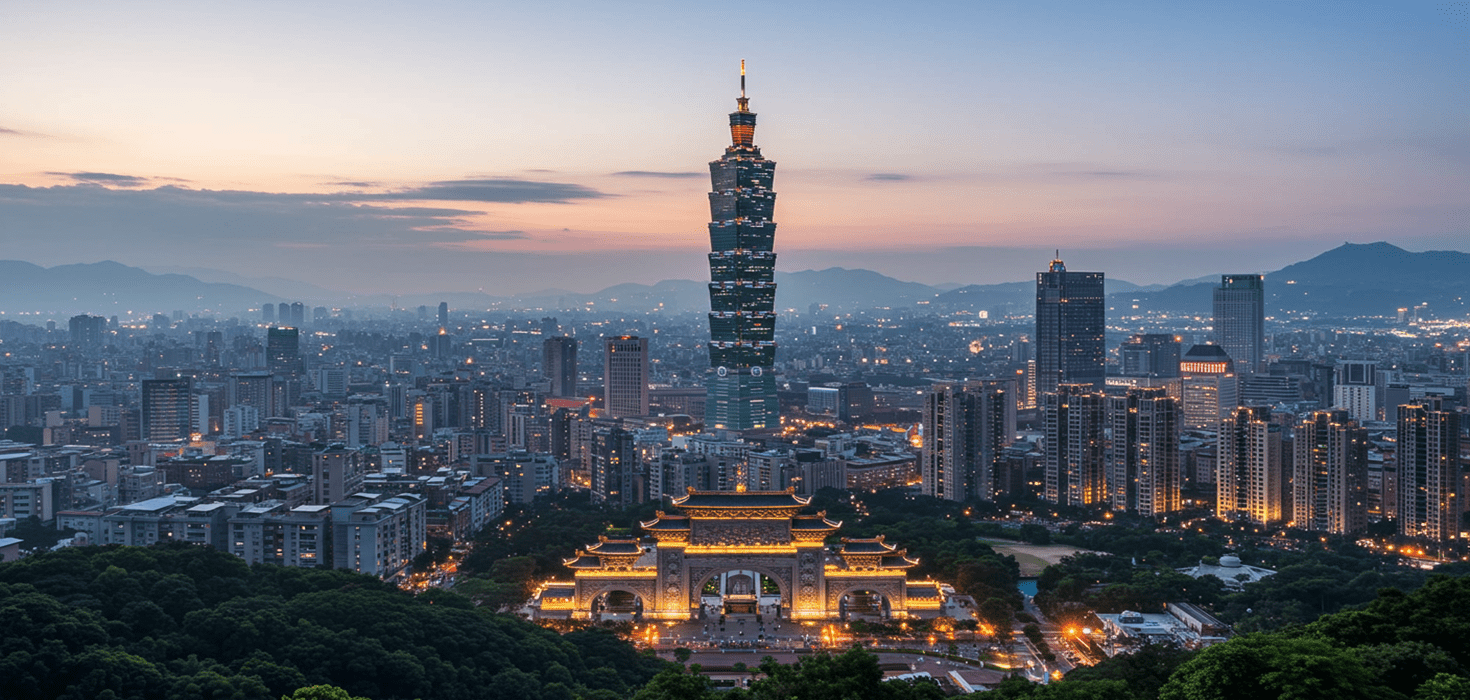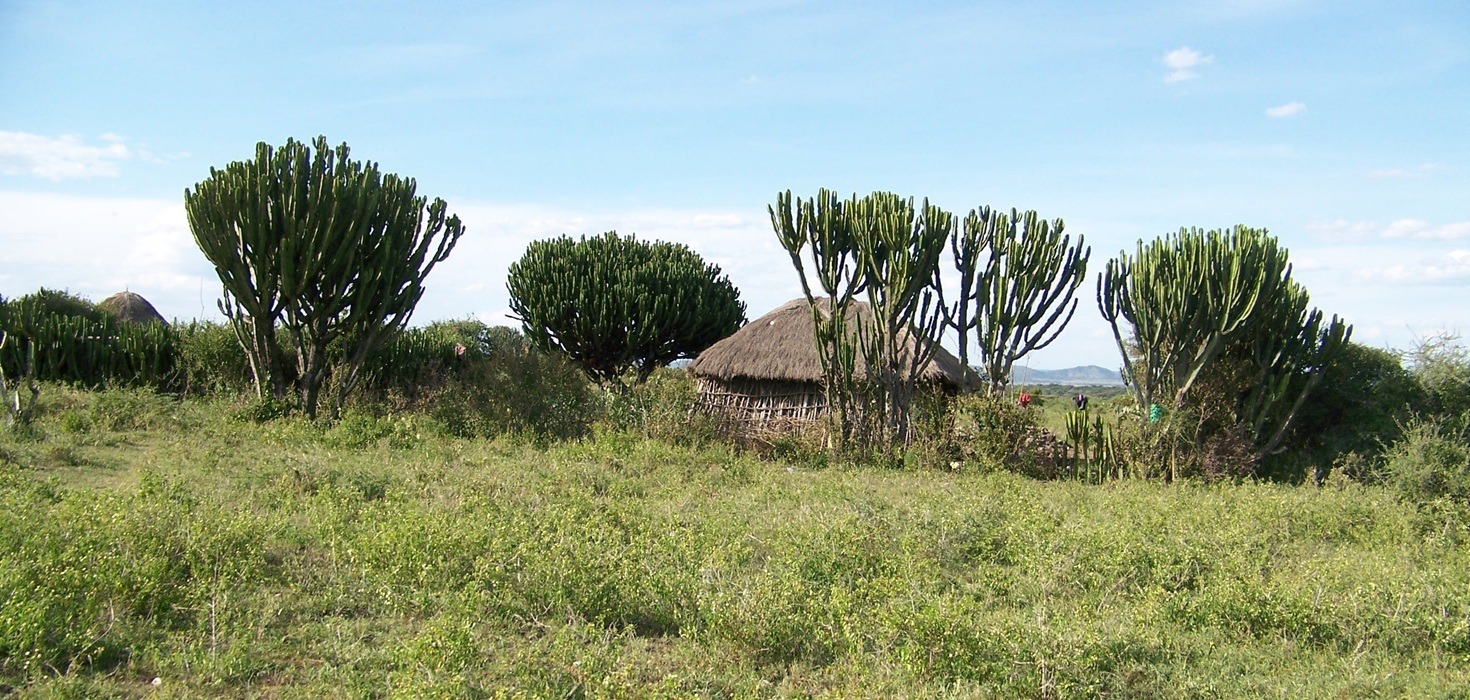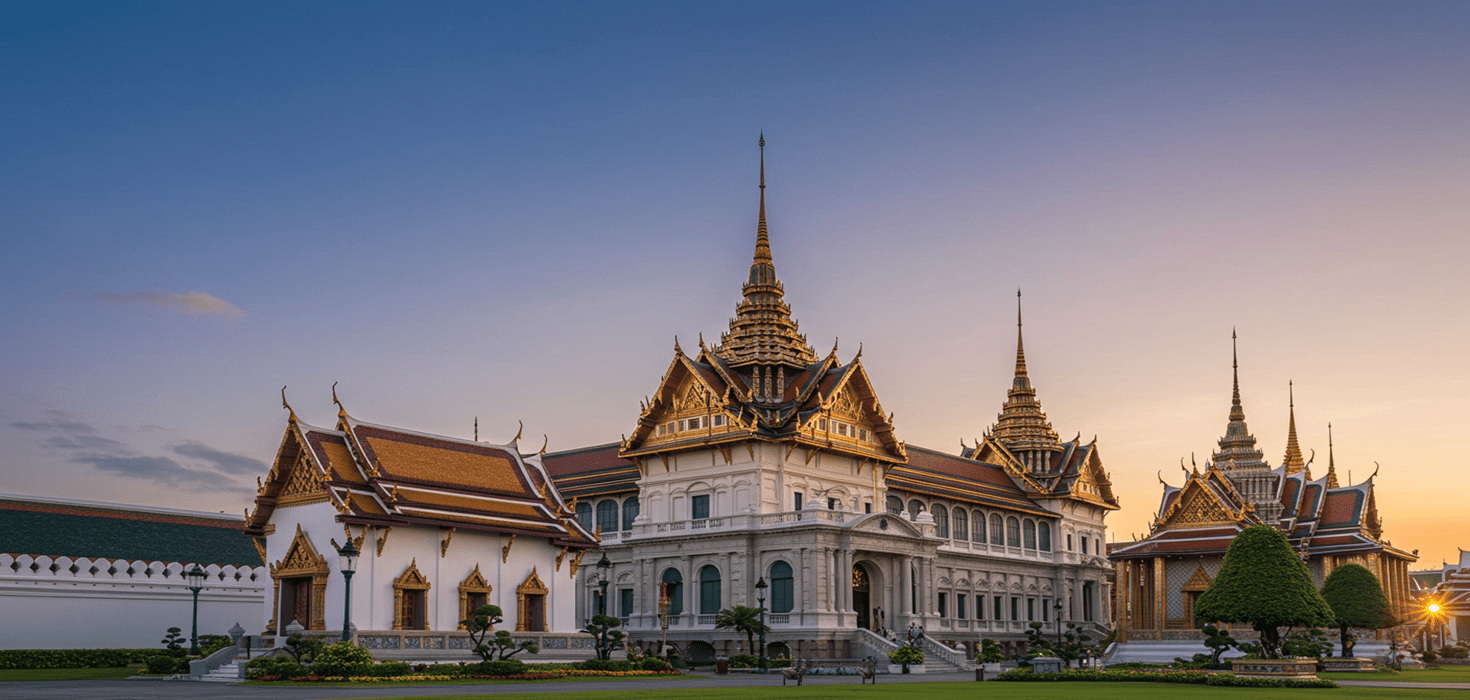The History of Hiroshima Peace Memorial Park
1 Nakajimacho, Naka Ward, Hiroshima, 730-0811, Japan
Nestled in the heart of Hiroshima, the Peace Memorial Park stands as a poignant reminder of the city’s tragic past and its commitment to peace. Before the atomic bomb reshaped its destiny, this area was Hiroshima’s bustling commercial and political center. The transformation of this district into a serene park is not just a change in landscape but a symbol of resilience and remembrance. Walking through the expansive 120,000 square meters of greenery, visitors can’t help but feel the stark contrast between the park’s tranquility and the bustling city life surrounding it.
The decision to create this park was a profound one. In the aftermath of the bombing, Hiroshima faced a pivotal choice: to rebuild this area as it once was or to dedicate it to peace and remembrance. Choosing the latter, Hiroshima transformed the scars of war into a space for reflection and education. As you stroll through its paths, you are treading on grounds that have witnessed history’s pivotal turn, a place where peace and hope rose from the ashes of destruction.
The A-Bomb Dome: A UNESCO World Heritage Site
1-10 Otemachi, Naka Ward, Hiroshima, 730-0051, Japan
The A-Bomb Dome, or Genbaku Dome, stands as a haunting yet awe-inspiring testament to the events of August 6, 1945. Its skeletal structure, a UNESCO World Heritage Site, is one of the few remnants of pre-war Hiroshima and serves as a tangible link to the city’s tragic past. This building was originally an exhibition hall, designed by Czech architect Jan Letzel, and its unique European-style architecture made it a prominent Hiroshima landmark.
When the atomic bomb detonated only 160 meters away, the Dome was one of the few structures to partially withstand the blast. Today, it exists in a preserved state, exactly as it was post-bombing. The site not only symbolizes the horrors of nuclear warfare but also Hiroshima’s unwavering commitment to peace advocacy. The Dome’s eerie beauty and its riverside location make it a compelling site for reflection on the destructive capabilities of war and the enduring hope for peace.
Hiroshima Peace Memorial Museum: A Must-Visit
1-2 Nakajimacho, Naka Ward, Hiroshima, 730-0811, Japan
Within the tranquil confines of the Peace Memorial Park lies the Hiroshima Peace Memorial Museum. Since its opening in 1955, the museum has been a pivotal destination for understanding the impact of the atomic bomb on Hiroshima and the world. The museum’s extensive collection includes harrowing artifacts, poignant photographs, and detailed exhibits that tell the story of Hiroshima before and after the bombing. The displays are designed to communicate the reality of nuclear warfare, emphasizing the immediate and lasting effects on the city and its people.
The museum offers audio guides, providing visitors with comprehensive insights into the exhibits. Among these are personal belongings of the victims, photographs showcasing the stark contrast between pre and post-bombing Hiroshima, and models depicting the bomb’s devastating impact. The narrative woven through these exhibits is not just one of loss and tragedy but also of resilience and hope. The museum is a profound experience, reminding us of the preciousness of peace and the human cost of war.
The Cenotaph for the A-Bomb Victims
1 Nakajimacho, Naka Ward, Hiroshima, 730-0811, Japan
At the heart of the park is the Cenotaph for the A-Bomb Victims, an iconic arched tomb that holds a deep emotional connection to Hiroshima’s history. Engraved with the poignant words “Let all the souls here rest in peace, for we shall not repeat the evil,” the Cenotaph is a powerful symbol of mourning and a promise for the future. Inside the stone chest beneath the arch, there is a register containing the names of over 300,000 victims of the bomb, a number that continues to grow as new names are added each year.
The Cenotaph’s design is more than just an architectural choice; it’s a thoughtful tribute to shelter the souls of the deceased. The annual Hiroshima Peace Memorial Ceremony, held at the park, centers around this monument. Here, wreaths are laid, and a moment of silence is observed, a tradition that brings together people from around the world in remembrance and commitment to peace. The Cenotaph serves not just as a memorial but as a continuous reminder of the consequences of war and the ongoing pursuit of a peaceful world.
Memorial Monuments and Sculptures
1-2 Nakajimacho, Naka Ward, Hiroshima, 730-0811, Japan
Scattered throughout the park are various monuments and sculptures, each with its unique story and significance. Among these is the Flame of Peace, a sculpture symbolizing both the victims’ suffering and the hope for a nuclear-free world. The Flame of Peace, designed by Kenzo Tange, features two joined wrists and two wings, representing uplifted palms towards the sky. This flame has been burning since 1964 and is a solemn vow that it will not be extinguished until the world is free of nuclear weapons.
The Children’s Peace Monument is another poignant memorial within the park. It was erected to honor Sadako Sasaki, a young girl who died from leukemia caused by radiation exposure. Inspired by the Japanese legend that folding a thousand paper cranes grants a wish, Sadako spent her final days folding cranes in hopes of recovering and promoting peace. Today, the monument stands as a testament to the innocent lives lost and the enduring spirit of hope that defines Hiroshima.
Peaceful Reflections: The Memorial Tower and Other Memorials
1 Nakajimacho, Naka Ward, Hiroshima, 730-0811, Japan
The Memorial Tower is a unique five-tiered structure built in memory of the thousands of students who perished in the bombing. These students, part of the government’s mobilization efforts during the war, represent the tragic loss of young lives. The tower, funded by the families of these students, is a solemn tribute to their memory. Approximately 6,300 names are inscribed here, a poignant reminder of the cost of war on future generations.
Nearby, the Sankichi Tōge Monument honors a young poet and peace advocate who survived the bombing. Tōge’s poems about the nuclear bomb received international acclaim and became a powerful voice in the anti-nuclear movement. His monument, located near the park’s Peace Memorial Hall, symbolizes the power of words and art in the pursuit of peace and remembrance.
The Peace Bell: A Symbol of Hope
1 Chome-10-2 Otemachi, Naka Ward, Hiroshima, 730-0811, Japan
The Peace Bell, constructed in 1964, is an embodiment of Hiroshima’s dedication to peace and the global anti-war movement. The bell’s design includes a world map without borders, Japanese symbols advocating for the abolition of nuclear weapons, and a mirror to reflect the aspirations of those who ring it. Located near a lotus flower pond, the bell and its surrounding beauty encourage visitors to pause and contemplate the significance of their actions in promoting peace.
The act of ringing the Peace Bell is a symbolic gesture, resonating with the desire for a world without war and nuclear threats. Visitors from around the globe are encouraged to ring the bell, sending a message of hope and unity. The bell’s serene setting, coupled with its powerful symbolism, makes it a poignant stop for those exploring the park.
Visiting Hiroshima Peace Memorial Park: Practical Information
Visiting Hiroshima Peace Memorial Park is a journey into the heart of the city’s history and its dedication to peace. The park is easily accessible via the Hiroshima Electric Railway, with stops at Genbaku Dome-mae Station or Hon-dori Station bringing you within walking distance. The park is open year-round, offering a space for reflection and education regardless of the season.
As you plan your visit, allow ample time to explore the various monuments and the museum. Each site within the park tells a part of Hiroshima’s story, contributing to a deeper understanding of the impact of war and the importance of peace.

